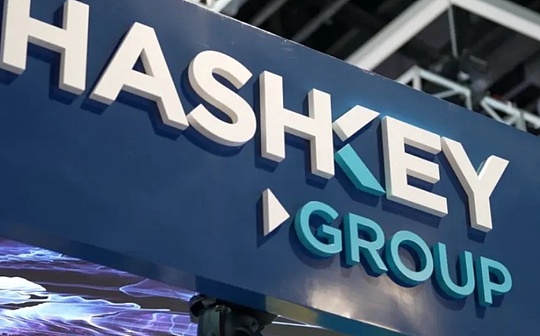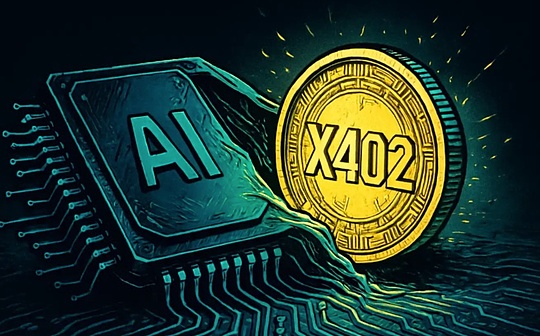
Author: Tariz Source: Mirror Translation: Shan Ouba, Bitchain Vision
summary
This article introduces a derivative market that enables Rollup to achieve fast and final nature and promote voluntary participation and fair competition between Rollup, proposal and builders.This incentive consistency between Ethereum and ROLLUP in the derivative market can help relieve the risk -related operational risk of rollup.Our unique design enables ROLLUP to act as a pre -confirmed provider, so as to achieve rapid pre -confirmation and enhance its ability to resist review.This ability ensures the real scalability of Rollup users.
motivation
Rollup runs user transactions outside Ethereum and transmits it to Ethereum.This mechanism enables users to experience lower transaction costs and faster transaction speeds.However, the rapid transaction processing in Rollup is achieved by the promises between Rollup and its users, and it is easily affected due to inconsistency between Ethereum and Rollup.
Rollup promises to make the next transaction based on the state of settlement transactions on Ethereum.The promise of this effective state conversion is guaranteed by Rollup’s encryption economic mechanism.However, this does not ensure that rollup’s transactions will indeed be included in the Ethereum block.
At present, Ethereum has no obligation to include rollup transactions in its block.More precisely, the Ethereum proposal may choose not to include Rollup transactions.This situation is derived from inconsistent incentives. Even if the Ethereum block contains Rollup transactions is conducive to the entire Ethereum ecosystem, it may not make specific proposals benefit.
It is a difficult task to encourage Ethereum to voluntarily cooperate to complete the Rollup transaction.If Ethereum participants do not cooperate to complete the final nature of Rollup, then Rollup cannot inherit the security of Ethereum for a long time.This situation may lead to ultimate delay and service interruption. Users will have unnecessary concerns when creating the next transaction, which will directly affect the reliability of the service.In order to ensure that rollup users can enjoy the real scalability of Rollup worry worry -free, the key is to align incentives and encourage Ethereum participants to voluntarily participate in the final nature of Rollup.
Fast and finality based on sorting
Fast endability means that Rollup can ensure that the state after execution will be settled on Ethereum.To achieve this, Rollup must make two promises in advance: 1) ensuring that user transactions can be included in Ethereum, 2) The completeness of the verification status conversion is effective.
Based on the Based Sequencing, as Justin proposed, using the proposal of Ethereum as the pre -confirmation provider of Rollup can realize the first promise.This method has been aligned between Rollup and Ethereum, and users can directly obtain guarantees about transactions from Ethereum.Pre -confirmed tip and reduce the incentive mechanism to ensure that the Ethereum proposal to maintain the promise of fulfilling its commitment is maintained.Three potential methods to implement this include::
1. 1.Proposal directly promise: This involves specify the proposal of the Ethereum as the pre -confirmed provider, and directly sends a signature pre -confirmation to the Rollup user.The advantage is that you can directly obtain a certain guarantee from Ethereum to inherit the activity of Ethereum.The disadvantage is that the expenses of the proposal will delay and the centralization of Ethereum.
2.Promise through relay: This method increases the possibility of pre -confirming the user through the help of third parties.The advantage is to prevent ROLLUP and proposal overload due to extra characters.The disadvantage is that the trust of relay may occur, and the promise may not be certain, but probability according to the different methods.
3..Promise of block space buyer: This method allows Rollup as a pre -confirmed provider, and pays the cost of some block construction rights in advance.The advantage is that by having a block for the finalization, Rollup can promise users certainly and achieve rapid pre -confirmation through its sorting.The disadvantage is that Rollup needs to face the risk of determining the price of the future block.
Each method has significant potential, but because of determining the operating risk of Ethereum block prices, the third choice has not been widely discussed.This article proposes a derivative market, which aims to alleviate the risk of Rollup and promote the active participation of all traders.
The derivative market is associated with the implementation of the commission pre -confirmation and rapid confirmation of the commissioned commissioned by sorting.
Long -term contract (proposal and rollup)
Rollup can lock the Ethereum block in advance by purchasing the right to build the block construction on a specific slot, thereby achieving the fast and final nature of the transaction.This process is similar to the common long -term contracts in the financial market.In order to understand the risk of Rollup’s operations due to the long -term contract, we look at a simple scene of a 32 slot forward -looking and slot auction on the beacon chain involved in the proposal.
Overview of a long -term contract
In this situation, the long -term contract allows rollup to lock a slot from the proposal at the predetermined price, providing Rollup with a guarantee space on the blockchain.The following is the gradual decomposition of the transaction process:
-
At T = 0, Rollup knows the next round of proposals.
-
At T = 1, Rollup participated in the slot auction and purchased a long -term contract for a specific slot with the proposal.
-
Starting from T = 2, after obtaining the slot, Rollup sorted its users’ transactions, provided users with pre -confirmation, and obtained income from their blocks.
-
At T = 3, Rollup requests a long -term contract, and its transaction will be compressed to the Ethereum block and submitted to the proposal.
-
At T = 4, the proposter passed the contract to the Ethereum blockchain to perform the contract by signing the receiving block.
-
Excessive payment cost risk: Rollup may not accurately predict the value of the Ethereum block when the long -term contract, leading to potential excessive payment costs.If the purchased space (such as the entire block space) exceeds the need for finalization, it will also lead to excessive costs.
-
Income instability: The main source of income of Rollup is to sell Rollup block space.If the income cannot be accurately predicted when signing a long -term contract, when the cost exceeds the generated income, Rollup will face financial risks.
-
Increase labor costs: Rollup must now engage in activities that have not been performed before, such as predicting the value of the Ethereum block, competing with the builder, and accurate predictive revenue.This expansion role adds operational problems and costs.
-
At T = 3, Builder uses the Rollup obtained from the swap contract to build the Rollup block and generate income at T = 4.
-
At T = 4, Rollup forced the obligation to execute the exchange contract, requiring Builder to include the Rollup transaction in the Ethereum block locked through the long -term contract.In this process, BUILEDER optimizes the additional income of the Ethereum block by placing the Rollup transaction at the bottom of the block and placing the builter’s transaction at the top.
-
At T = 5, BUILEDER delivered the Ethereum block to the Proposer, and the latter proposed it on Ethereum according to the long -term contract to achieve the finalization of the scheduled time.
-
Explore the technical requirements required for the derivative market.This includes information exchanges for settlement contracts, monitoring tracking and management contract performance, and the reduction mechanism for implementing commitments.
-
Explore the summary design of Blobspace.Rollup using Blobspace must purchase the entire BLOB. No matter what the required space, this should be seamlessly integrated with the market structure I proposed.Tamara’s recently proposed Blobspace guide number is also very interesting.
-
Proposed other designs that help Ethereum decentralized.This market can encourage the proposal to participate voluntarily through incentive measures consistent with the final sexuality, but this may be centralized due to the proposal’s gathering factors.Just as Mikeneuder (Execution T 4) and Barnabe (APS-BURN) proposal, the separation of the designs separated by the beacon proposal and executor may be a potential solution.
Rollup’s operating risk
The above scenes expose several risks of Rollup in terms of operating costs:
By understanding and managing these risks, Rollup can better use the long -term contracts to achieve the fast and final nature of their transactions and ensure the sustainability and efficiency of its operation.
Derivative market
In order to alleviate the risk of operation related to Rollup, I proposed a derivative market containing special participants (called Builders).This market includes two derivatives: long -term contracts between Builder and PROPOSER and swap contracts between Rollup and Builder.The purpose of this market is not only to reduce the operational risks facing Rollup in the process of realizing the rapid finality of the block space, but also use the professional knowledge of each participant to improve the efficiency of the product.
Market structure
Long -term contract (Builder and Proposer)
At T = 1, Builder signed a long -term contract with PROPOSER by participating in the slot auction.This contract allows Builder to ensure the block space required by the ROLLUP exchange, while the Proposer ensures a stable source of income.
Converse contract (Builder and Rollup)
At T = 2, BUILDER and Rollup signed swap contracts. Based on the BUILEDER, the obligation of rollup transactions must be included in the block.This contract enables both parties to hedge the challenges encountered during the construction of the block.Rollup uses its future block construction right to ensure the finalization of Ethereum blocks, and Builder obtains potential profits by building blocks for Rollup, in exchange for some Ethereum blocks.
Contract execution
Participation motivation
Rollup participates in block purchases to achieve rapid and finalization, and at the same time hedge the risk of operation.Through swap contracts, Rollup pre -ensure the necessary block space, ensuring that all pre -confirmed Rollup transactions can be included in the Ethereum block.This process allows ROLLUP to avoid the risk of income in order to ensure that the Ethereum block space is exceeded, eliminating unnecessary price prediction and auction participation.
BUILDERS is under over -payment risk caused by slot auction.By ensuring the top space in Ethereum and to ensure the Rollup block space through swap contracts, Builders has a dual source of income, decentralized risks and improves financial stability.
Proposers participated to get rewards related to Rollup’s rapid and finalized.Builders participating in the slot auction will take into account the possible income (MEV) of the Rollup block to adjust their bid.This kind of incentive alignment about Rollup’s finalization provides additional income opportunities for Proposers.
A natural problem is:Who is a pre -confirmed provider?My brief answer is “rollup”, which is further explained in detail in the “building block in Rollup”.
Extra designs of derivatives market
To effectively monetize financial products, the key is to create an environment that allows all market participants to compete and actively participate.To this end, the product includes three key design enhancement functions:
Conditional drop contract
Converse contracts usually allocate all profit opportunities to the builders, and their restrictions may prevent summarization.In order to encourage ROLLUP to participate, conditional exchange contracts were proposed.
The contract includes a condition. If the builder’s income obtained by the builder through the Rollup block exceeds the fixed cost with the proposal in the long -term contract, Rollup will stop providing the remaining block to the builder.Rollup can build the remaining blocks by itself. It can also distribute the block construction right to the builders through block auction, thereby generating additional income.
If the summary does not use all Ethereum block space for final determination, the founder still retains the chance of income to generate income on the Ethereum block.This balances the risks and returns of both parties, retains the potential of conclusions, and maintains the motivation of the founder’s participation.
Fair competition market
Finalization is a key process for Rollups to inherit Ethereum security, and it is necessary to regularly obtain the Ethereum block.This mandatory purchase has created a high pricing capacity for the proposter, which may lead to an unfair competitive environment, thereby harming market efficiency and fairness.
A effective market can combine the variable value of the summary block with the fixed cost of the Ethereum block with the builder.This consistency can be compared to the financial market. Among them, the “ticket value” of the swap contract is zero, indicating that there is no difference between the agreed value and the market value.
In order to reduce the pricing power of a single builder and allow ROLLUP to contract with reasonable price, it is necessary to promote competition between multiple builders participating in the exchange transactions.This can be achieved by supporting the participation of multiple builders who have block construction rights at different times.In addition, the long -term contract market should be expanded; multiple proposals (such as 32) who have the right to propose block proposals at different times should be encouraged to participate in these contracts.
This structure helps to maintain a reasonable cost of paying summaries to builders, because builders will bid at more competitive prices in long -term contracts with the proposal.The proposal will still maximize the income of the block, and the summary requires the Ethereum block to finally be determined, which will help fair price settings.
It is necessary to discuss the value of the ticket surface in the exchange contract.
United Rollup strategy: derivatives of all rollup
Switching contracts are a protocol for part of the value of the Summary block for the Ethereum block. The premise is that it is obliged to include a summary transaction in a certain position of the Ethereum block.It is unlikely that the builder is involved in a relatively low summary of the block value.Therefore, the summary of the application may have a lower perception block value and may be marginalized in the swap market.
To solve this problem, we introduced a joint strategy.The joint summary strategy involves the use of multiple summary groups as a collective trading team to support market participation.For example, three of the three -specific application (DEX, NFT, and Games) are grouped together.The group signed a exchange contract with a single builder, which has the right to build blocks for all three summaries.When performing switching contracts, the builder is obliged to include all transactions summarized in the group into the Ethereum block.
By cross -summary arbitrage and other strategies, the block value of the constructifier may be higher than a single block.If all involved summary is ZK summary, then they can reduce verification costs by proof of aggregation as in Avail NEXUS, thereby effectively ensuring the fast final determination function of the summary of the application.
Will these additional designs weaken the motivation of participants’ participation?
Instead, these designs have enhanced the driving force for Rollups, increasing the income opportunities of the founder and proposal, and cultivating sustainable market ecosystems.
Construction block in rollup
This section explores the block construction method used by the builders who obtain block construction rights through the switching contract in the summary.This design realizes the vital anti -review and rapid pre -confirmation of users -centered summary.
The review resistance in rollup
Rollups signs switching contracts with the builders who have the right to build a block construction in a specific Ethereum slot to ensure the fast final certainty for users.According to these contracts, similar to PBS, the builder delivered the most favorable block to rollup, and then executed by rollup.However, this structure may cause summary users to face the first trading attack of review, sandwiches and builders.
Rollup uses Radius sorting engine to provide users with pre -confirmation based on cryptography to ensure that the transaction is not reviewed.This method involves the encryption of the user’s use of delayed encryption and submits it to the summary of the encrypted memory pool.This encryption can keep the transaction confidential until it is made to include it in the summary block, thereby preventing intentional review.Once decided to be included, the transaction will be automatically decrypted, allowing summaries to execute them and provide pre -confirmation.This promise contains the order that can ensure that after the decryption, no one can re -sort the transaction, thereby protecting the user from the preemptive transaction and sandwich attack.
Fast -pre -recognition
>
Rollup can achieve instant fast pre -confirmation by specifying the pre -configured provider as its sorter and dividing the block space into a top (TOB) and block bottom (BOB).
TOB is the most valuable space in the summary block.Summarize TOB construction rights to builders who signed contracts through the exchange agreement.The builder generates a background operating package based on the state of the previous block and delivered them to execute and generate profits.
BOB is specified for conventional user transactions in summary.It sorted user transactions into BOB and provides pre -confirmation.
This structure shows the synergy of the Radius sort engine to protect the user’s intentional harmful MEV, because all user transactions contained in the BOB are encrypted.Even if a single sequencer sequences the BOB, it can also protect users from the impact of centralized risks such as review, sandwiches, and preemptive transactions, while achieving rapid pre -confirmation.
Union with rollup strategy
I introduced the Syndicated Rollup strategy above as a method that maintains its custom scalability and effectively realizes quickly and final determination.This section demonstrates how the builder builds the Rollup block that selects this strategy.
>
According to Syndicated Rollup strategies, Rollup A and B signed contracts as a whole to assign TOB (Top-OF-Block) construction rights to architects.The builder creates a cross -summary bundle package included in TOB and submits them to each summary.The summary will verify whether the constructor submitted is the parties to the contract in accordance with the authorization agreement and include the bundled package in the TOB.In this process, the summary can be used to promote the smooth implementation of the contract.
In BOB sorting, ROLLUPS can be selected between independent sort engines and shared sort engines.If the summary hopes to provide users with a combination of summary, they will choose to share the sorter engine, and the selected sorter will act as a shared configuration program.If each rollup chooses its own sort engine, they can independently provide users with a fast pre -confirmation.
in conclusion
I am full of enthusiasm for the future of Rollup, and I am particularly committed to advancing ROLLUP in a more user -centric direction.Fast endality is the ability to allow users to enjoy real transaction speed on ROLLUPS, and Ethereum voluntarily participating in the derivative market can effectively achieve rapid endability.Radius’s sorting engine ensures that Rollups participating in the derivative market ensures its own review resistance and quickly pre -confirmed, even in the contract with the builder.








